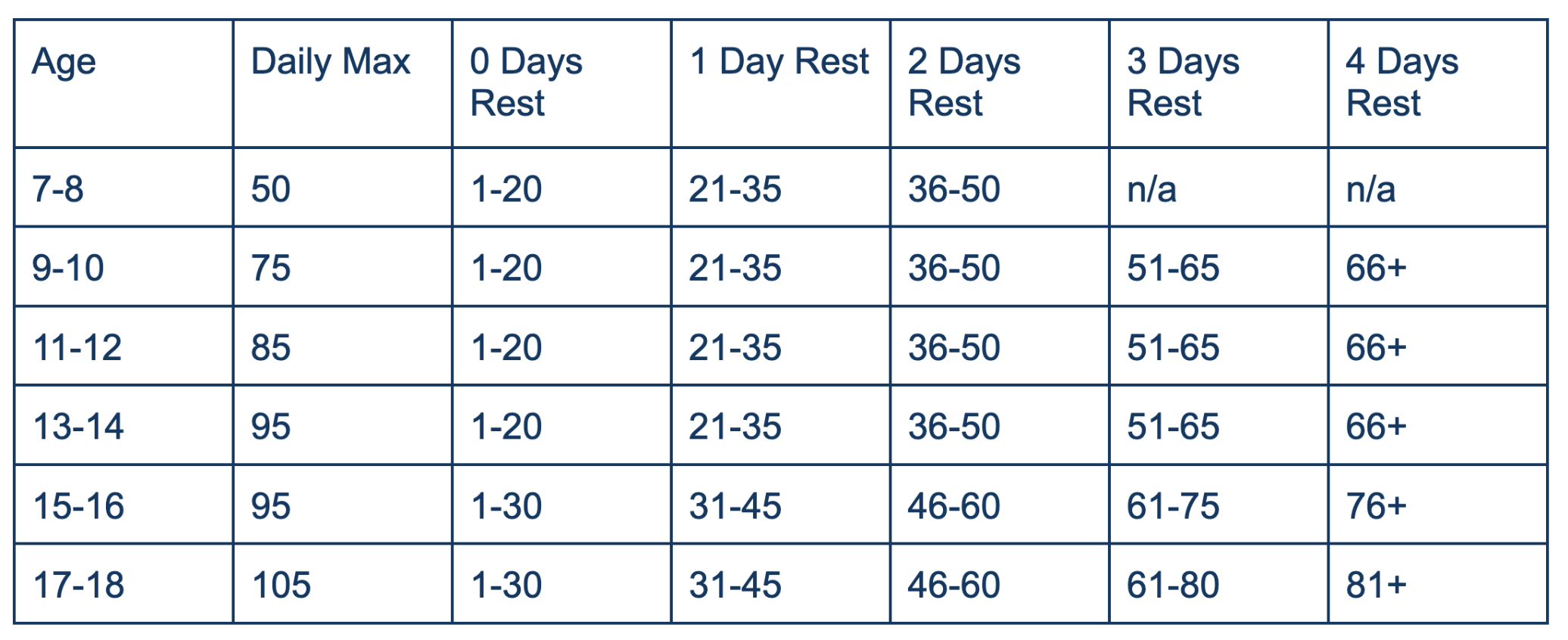How Much Should My Kid Be Throwing?
When I see a youth baseball athlete, one of the first questions I ask is how many pitches are they throwing. Volume of pitches thrown is one of the biggest predictors for injury in a baseball player. So the next question is how much should they actually be throwing. The MLB in conjunction with USA baseball have put together some guidelines for youth athletes that I would like to cover.
First, is time off from baseball. This is tough, especially for parents of a child who loves baseball. If your child is asking when the next session is or if they can go to a facility and throw and work on things, it is hard to say no. For ages 8 through 18, the recommendation is 4 months a year with no throwing, with 2-3 of those months being continuous. And this is absolutely no throwing. This doesn’t mean go to the gym once a week and take some throws. This isn’t time to be the catcher for your buddy, this is zero throwing. This will physically protect the athlete from overuse injuries but can also help prevent mental burnout in an athlete. About 70% of children will quit organized sports by the age of 13 and the most cited reason is burnout making it not fun anymore.
At all age ranges, they state to always warm up properly. This is to help avoid injury. When tissues are warmer and the brain is primed for movement, we see injury rates drop. A good warm up should get a light sweat going and go over the basic movement patterns that are going to be used. If pitches are thrown during warm up, even if they aren’t full speed, those count towards total pitch counts.
Next is the total innings pitched in a year. It is hard for some parents to track total pitches, especially if they aren’t present for the entire duration of a practice. An easy metric to track is total innings pitched. For an 8 and under athlete, do not exceed 60 innings in a 12 month period. For 9-12 year olds, do not exceed 80 innings in a 12 month period. For 13-18 do not exceed 100 innings in a 12 month period.
Then it is looking at actual pitch counts. When totalling pitches, one needs to include ALL pitches thrown, including warm ups, cool downs, bull pen, BP and game pitches. The pitch counts are broken down into max daily pitches but then also how many days of rest need to follow an outing based on how many pitches were thrown.
These numbers are maximums, if a player is showing signs of fatigue, like poor technique or power dropping off, they should always be shut down and rested immediately.
Other things to avoid would be use of a radar gun at an early age. Youth athletes should focus on technique up until late high school at the earliest. Once a pitcher is removed from a game, they should not return, even if they haven’t hit their daily maximum. Pitchers shouldn’t pitch in multiple games in the same day, even if they haven’t hit their maximum.
Injuries to throwing athletes can happen from many different causes but if you manage the load of your pitcher properly, you can greatly reduce the incidence of injury.


